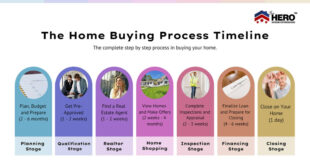How to Lock Rates Today: Guide to Securing Your Mortgage Rate. Locking in a mortgage rate is a critical step in the home-buying process. It provides financial security and protects borrowers from fluctuating interest rates. In this guide, we will explore everything you need to know about how to lock rates today, including its benefits, process, tips, and answers to frequently asked questions.
Understanding Rate Locking
A rate lock is an agreement between a borrower and a lender to secure a specific interest rate on a mortgage for a set period. This means that even if interest rates increase before closing, your rate remains unchanged, ensuring predictability in your monthly payments.
Key Features of a Rate Lock:
- Duration: Typically lasts between 30 and 60 days, though longer locks are available.
- Commitment: Protects borrowers from rate increases during the lock period.
- Flexibility: Some lenders offer float-down options, allowing borrowers to take advantage of lower rates if they drop.
Benefits of Locking Rates Today
- Protection Against Rising Rates: Shields you from unexpected rate hikes during the home-buying process.
- Budget Certainty: Ensures consistent monthly payments, making financial planning easier.
- Peace of Mind: Removes the stress of monitoring daily rate changes.
When to Lock Rates
Timing is crucial when locking in a rate. Here are some key considerations:
- During Pre-Approval: Locking early can secure a favorable rate if the market shows signs of increasing.
- After Finding a Property: Once your offer is accepted, locking the rate ensures stability as you move toward closing.
- Market Trends: Monitor economic indicators and trends to decide the optimal time for locking in your rate.
The Process of Locking Rates
- Discuss with Your Lender: Understand the terms, conditions, and fees associated with a rate lock.
- Choose a Lock Period: Decide the length of your rate lock based on your closing timeline.
- Sign the Agreement: Formalize the rate lock with your lender to secure the terms.
- Close Within the Lock Period: Ensure the transaction is completed before the lock expires to avoid potential penalties.
Factors Affecting Mortgage Rates
- Economic Conditions: Inflation, unemployment, and Federal Reserve policies influence rates.
- Credit Score: Higher scores typically qualify for better rates.
- Loan Type and Term: Fixed vs. adjustable rates and loan duration impact interest rates.
- Down Payment: Larger down payments can result in lower rates.
10 Tips for Locking Rates Today
- Monitor Rate Trends: Stay informed about market movements and economic indicators.
- Shop Around: Compare rates and terms from multiple lenders.
- Act Quickly: Lock rates as soon as you find a favorable offer to avoid market changes.
- Understand Lock Periods: Align the lock period with your expected closing date.
- Ask About Fees: Clarify any costs associated with locking or extending a rate lock.
- Inquire About Float-Down Options: Check if your lender allows adjustments for lower rates.
- Maintain Financial Stability: Avoid major financial changes that could affect your credit profile.
- Choose a Reliable Lender: Work with a lender known for transparency and efficiency.
- Prepare Documentation: Ensure all necessary paperwork is ready to avoid delays.
- Consult Experts: Seek advice from mortgage brokers or financial advisors.
10 Frequently Asked Questions About Locking Rates
1. What is the ideal time to lock a rate? It depends on market conditions and your closing timeline. Locking after receiving pre-approval or once your offer is accepted is common.
2. How long can I lock a rate? Rate locks typically range from 30 to 60 days, though longer options may be available.
3. What happens if my rate lock expires? If you don’t close within the lock period, you may need to pay for an extension or accept a new rate.
4. Can I lock a rate before finding a home? Some lenders offer rate locks during pre-approval, but terms may vary.
5. Are there fees for locking a rate? Some lenders charge fees, especially for extended lock periods or float-down options.
6. What is a float-down option? A float-down allows you to secure a lower rate if market rates drop during the lock period.
7. Can I change lenders after locking a rate? Yes, but you will lose the locked rate and need to renegotiate with the new lender.
8. How do I know if rates will increase? Monitor economic trends, Federal Reserve announcements, and financial news for indications of rate changes.
9. Does locking a rate affect my credit score? No, the process of locking a rate does not impact your credit score.
10. Can I extend a rate lock? Most lenders allow extensions for a fee, but terms vary.
Conclusion
Locking in a mortgage rate today is a smart financial decision for anyone navigating the home-buying process. It provides security, stability, and peace of mind during what can be a stressful time. By understanding the process, timing your lock appropriately, and working with a trusted lender, you can protect yourself from market volatility and focus on securing your dream home.
Take control of your mortgage journey by locking in your rate today. With proper planning and expert guidance, you can achieve financial stability and move confidently toward homeownership.
 mortgage.kbk.news
mortgage.kbk.news
